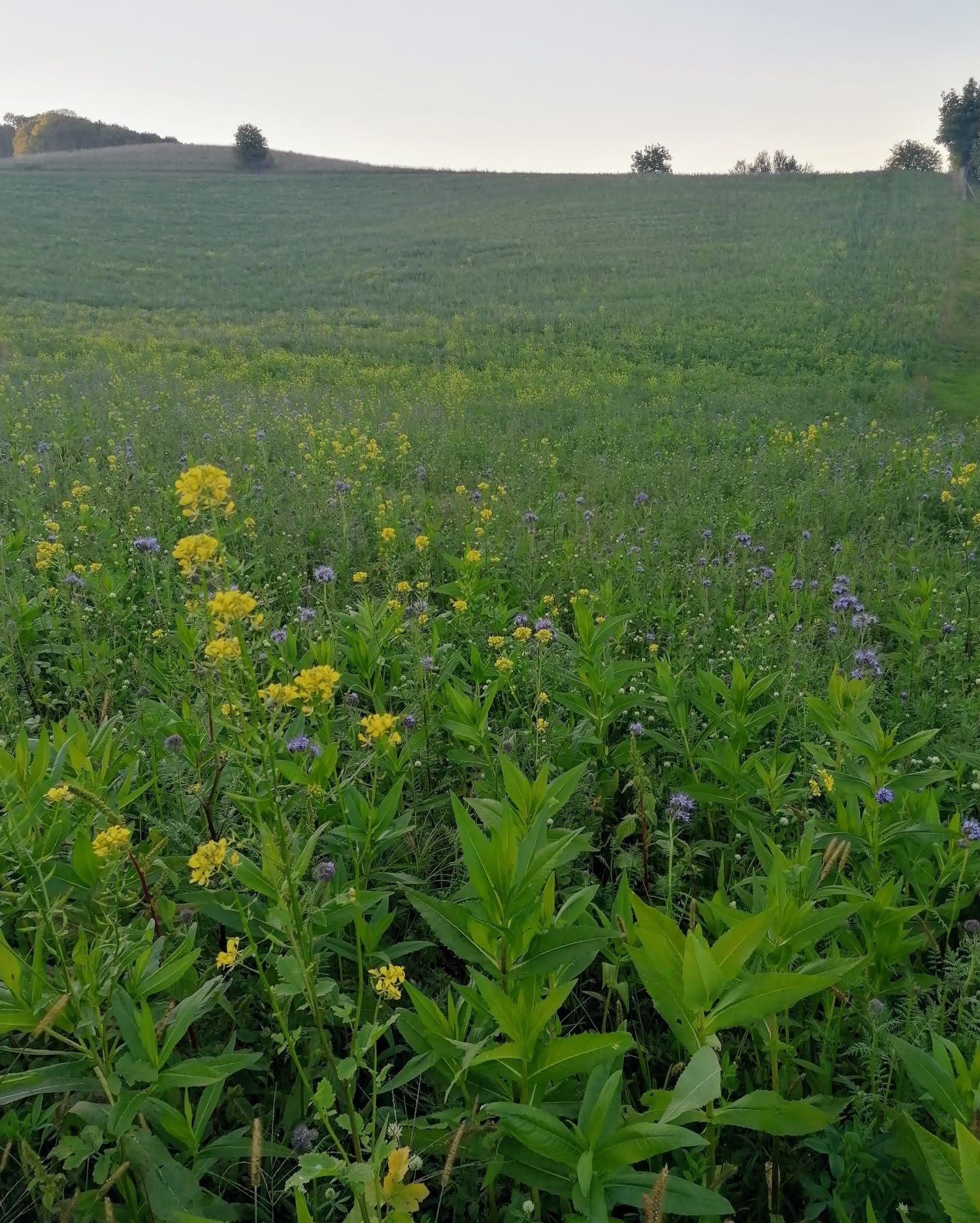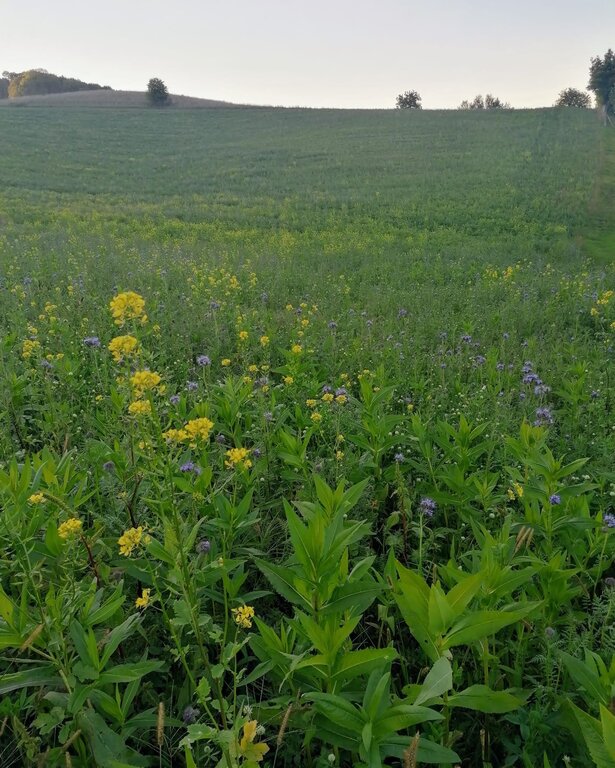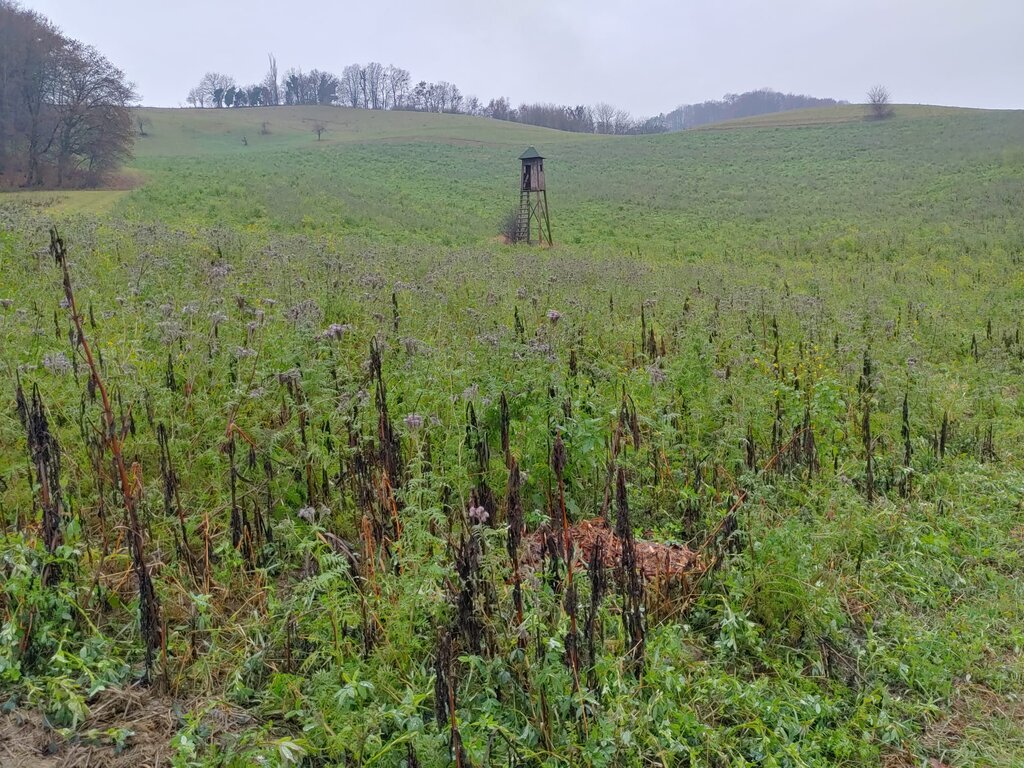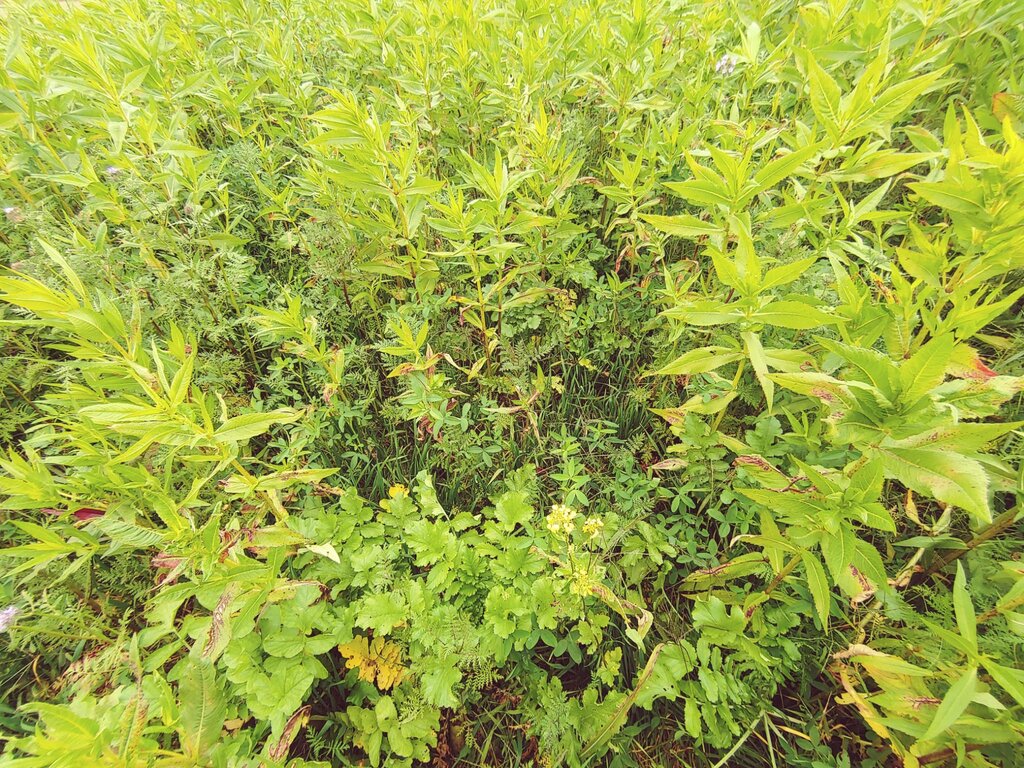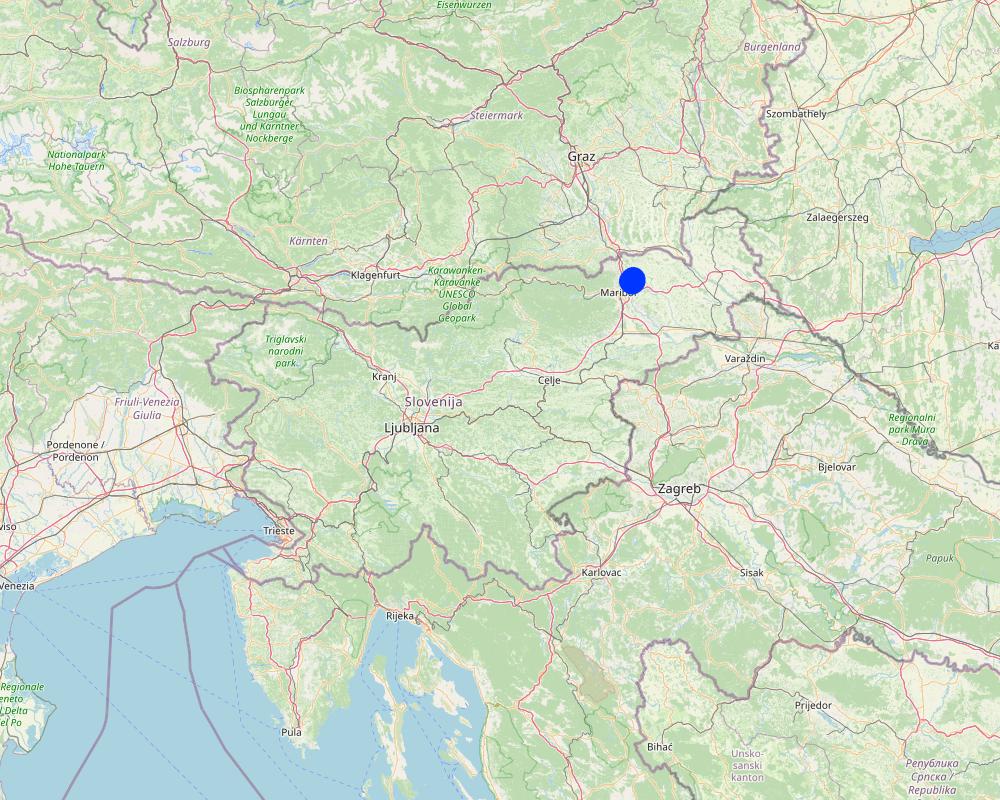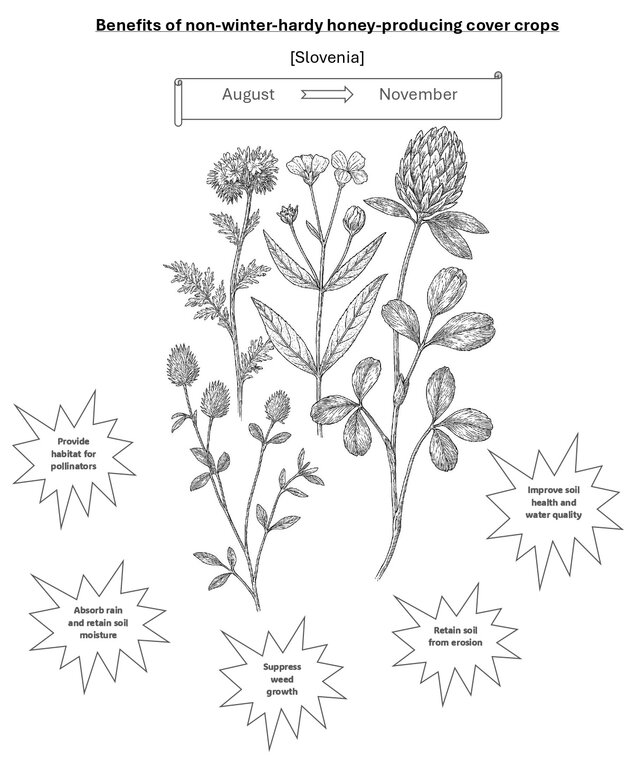Non-winter-hardy honey-producing cover crops [สโลวีเนีย]
- ผู้สร้างสรรค์:
- การอัพเดท:
- ผู้รวบรวม: Gregor Kramberger
- ผู้เรียบเรียง: Tamara Korošec
- ผู้ตรวจสอบ: William Critchley, Rima Mekdaschi Studer
Neprezimni medonosni posevki
technologies_7463 - สโลวีเนีย
ดูส่วนย่อย
ขยายทั้งหมด ย่อทั้งหมด1. ข้อมูลทั่วไป
1.2 รายละเอียดที่ติดต่อได้ของผู้รวบรวมและองค์กรที่เกี่ยวข้องในการประเมินและการจัดเตรียมทำเอกสารของเทคโนโลยี
ผู้เชี่ยวชาญ SLM:
ผู้ใช้ที่ดิน:
Ropič Andrej
Farmer
สโลวีเนีย
co-compiler:
Horvat Tomotej
Chamber of Agriculture and Forestry of Slovenia (KGZS) – Institute of Agriculture and Forestry Maribor
สโลวีเนีย
ชื่อของโครงการซึ่งอำนวยความสะดวกในการทำเอกสารหรือการประเมินเทคโนโลยี (ถ้าเกี่ยวข้อง)
OPtimal strategies to retAIN and re-use water and nutrients in small agricultural catchments across different soil-climatic regions in Europe (OPTAIN)ชื่อขององค์กรซึ่งอำนวยความสะดวกในการทำเอกสารหรือการประเมินเทคโนโลยี (ถ้าเกี่ยวข้อง)
Chamber of Agriculture and Forestry of Slovenia – Institute of Agriculture and Forestry Maribor (KGZS) - สโลวีเนีย1.3 เงื่อนไขการใช้ข้อมูลที่ได้บันทึกผ่านทาง WOCAT
ผู้รวบรวมและวิทยากรหลักยอมรับเงื่อนไขเกี่ยวกับการใช้ข้อมูลที่ถูกบันทึกผ่านทาง WOCAT:
ใช่
1.4 การเปิดเผยเรื่องความยั่งยืนของเทคโนโลยีที่ได้อธิบายไว้
เทคโนโลยีที่ได้อธิบายไว้นี้เป็นปัญหาของความเสื่อมโทรมโทรมของที่ดินหรือไม่ จึงไม่ได้รับการยอมรับว่าเป็นเทคโนโลยีเพื่อการจัดการที่ดินอย่างยั่งยืน:
ไม่ใช่
2. การอธิบายลักษณะของเทคโนโลยี SLM
2.1 การอธิบายแบบสั้น ๆ ของเทคโนโลยี
คำจำกัดความของเทคโนโลยี:
Non-winter-hardy honey-producing cover crops enhance soil fertility, prevent erosion, reduce nutrient leaching, and support biodiversity. These fast-growing, flowering plants are integrated into crop rotation, offering ecological and long-term economic benefits - and are supported by EU agricultural subsidies.
2.2 การอธิบายแบบละเอียดของเทคโนโลยี
คำอธิบาย:
Cover cropping with non-winter-hardy honey-producing mixtures is expanding on arable land in Slovenia, especially in lowland areas near water protection zones, streams, and other water bodies. These plants are often integrated into crop rotations of both conventional and organic farming systems. Together with winter-hardy cover crops, these mixtures are an essential component of good sustainable land management. Supported by the EU's Common Agricultural Policy through SOPO (Schemes for Climate and Environment) and KOPOP (Agri-Environmental-Climate Payments), this technology promotes sustainable agriculture by improving soil structure and health and preventing nutrient leaching.
Cover crops - also referred to as catch crops or green manures - are fast-growing, plants from various families, mostly legumes, grasses and brassicas. After the main crop harvest, these plants are sown and cover the soil during summer, autumn, and winter. We distinguish between winter-hardy and non-winter-hardy cover crops.
One of the most popular non-winter-hardy mixtures used in Slovenia, includes Egyptian clover (Trifolium alexandrinum), red clover (Trifolium pratense), phacelia (Phacelia tanacetifolia), and niger (Guizotia abyssinica). These species are drought-tolerant, support pollinators, and naturally perish after the first frost, simplifying subsequent soil preparation.
Their main functions are to improve soil fertility, retain moisture, prevent erosion, and reduce nutrient leaching into waterways. The different characteristics of the species in the mixture combine multiple advantages:
- dissimilar root systems extract nutrients from different layers of the soil;
- the various plant species extract different root exudates, which serve as a nutrient source for soil microorganisms;
- compacted soils become loose and of better structure;
- these species combined lead to enriched organic matter and humus;
- flowering species provide forage for pollinators;
- an overall impact is a reduced need for fertilizers and pesticides which in turn enhances water quality and lowers environmental risks;
- the leguminous species in the mixture fix nitrogen from the air, and follow-up crops like maize require less fertilizer, reducing greenhouse gas emissions.
Honey-producing non-winter-hardy mixtures are typically included in multi-year crop rotation plans. Activities involve selecting appropriate plant species/varieties or mixtures or species/varieties based on soil, climate, rotation and function requirements.
Shallow cultivation or direct sowing on well-prepared seedbeds takes place after cereal harvest, generally in July and August, with a recommended seeding rate of 12 kg/ha. Farmers usually avoid additional fertilization, as soil nutrients suffice for the growth of cover crops. Minimal maintenance is needed during growth since these plants suppress weeds and reduce pest pressure. Termination involves natural frost die-off, mulching, rolling, or shallow tillage. Detailed record-keeping ensures compliance with subsidy programs and supports long-term benefits.
Farmers value such cover cropping for its multiple benefits. They very much appreciate the subsidies they get for their additional effort to sow cover crops. However, challenges include higher initial costs, dependency on appropriate weather, complex timing of operations, and potential competition with main crops. Despite these hurdles, many farmers see cover cropping as a critical component of sustainable farming practices.
2.3 รูปภาพของเทคโนโลยี
2.5 ประเทศภูมิภาค หรือสถานที่ตั้งที่เทคโนโลยีได้นำไปใช้และได้รับการครอบคลุมโดยการประเมินนี้
ประเทศ:
สโลวีเนีย
ภูมิภาค/รัฐ/จังหวัด:
Jareninski dol, Pernica
ข้อมูลจำเพาะเพิ่มเติมของสถานที่ตั้ง :
Vosek
ระบุการกระจายตัวของเทคโนโลยี:
- กระจายไปอย่างสม่ำเสมอในพื้นที่
If the Technology is evenly spread over an area, specify area covered (in km2):
137.0
Is/are the technology site(s) located in a permanently protected area?
ไม่ใช่
Map
×2.6 วันที่การดำเนินการ
ระบุปีที่ใช้:
2020
ถ้าไม่รู้ปีที่แน่นอน ให้ระบุวันที่โดยประมาณ:
- น้อยกว่า 10 ปี (ไม่นานนี้)
2.7 คำแนะนำของเทคโนโลยี
ให้ระบุว่าเทคโนโลยีถูกแนะนำเข้ามาอย่างไร:
- ด้วยการริเริ่มของผู้ใช้ที่ดินเอง
- ในช่วงการทดลองหรือการทำวิจัย
ความคิดเห็น (ประเภทของโครงการ เป็นต้น) :
The farmer adopted cover cropping as part of his transition to low-tillage farming, supported by experimentation and guidance from the public advisory service. The measure, backed by CAP subsidies, was adopted after research and experimentation, ensuring its effective integration into his farming system.
3. การจัดประเภทของเทคโนโลยี SLM
3.1 วัตถุประสงค์หลักของเทคโนโลยี
- ปรับปรุงการผลิตให้ดีขึ้น
- ลด ป้องกัน ฟื้นฟู การเสื่อมโทรมของที่ดิน
- อนุรักษ์ระบบนิเวศน์
- ป้องกันพื้นที่ลุ่มน้ำ/บริเวณท้ายน้ำ โดยร่วมกับเทคโนโลยีอื่นๆ
- รักษาสภาพหรือปรับปรุงความหลากหลายทางชีวภาพ
3.2 ประเภทของการใช้ที่ดินในปัจจุบันที่ได้นำเทคโนโลยีไปใช้
Land use mixed within the same land unit:
ไม่ใช่
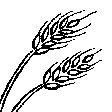
พื้นที่ปลูกพืช
- การปลูกพืชล้มลุกอายุปีเดียว
Annual cropping - Specify crops:
- cereals - barley
- cereals - maize
- cereals - wheat (winter)
จำนวนของฤดูเพาะปลูกต่อปี:
- 1
Is intercropping practiced?
ใช่
If yes, specify which crops are intercropped:
The first year of the rotation comprises a mix of grasses and legumes
Is crop rotation practiced?
ใช่
ถ้าใช่ ระบุ:
The farmer practices a 4- to 5-year crop rotation plan, primarily involving maize and winter cereals. After the harvest of winter cereals (e.g., wheat) in July, cover crops are sown in early August to protect the soil, enhance fertility, and support low-tillage practices.
3.3 Has land use changed due to the implementation of the Technology?
Has land use changed due to the implementation of the Technology?
- No (Continue with question 3.4)
3.4 การใช้น้ำ
การใช้น้ำของที่ดินที่มีการใช้เทคโนโลยีอยู่:
- จากน้ำฝน
3.5 กลุ่ม SLM ที่ตรงกับเทคโนโลยีนี้
- การปรับปรุงดิน / พืชคลุมดิน
- การรบกวนดินให้น้อยที่สุด
- การจัดการความอุดมสมบรูณ์ของดินแบบผสมผสาน
3.6 มาตรการ SLM ที่ประกอบกันเป็นเทคโนโลยี
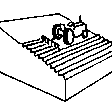
มาตรการจัดการพืช
- A1: พืช/สิ่งปกคลุมดิน
- A2: อินทรียวัตถุในดิน/ความอุดมสมบูรณ์ในดิน
- A6: Residue management
A6: Specify residue management:
A 6.4: retained
3.7 รูปแบบหลักของการเสื่อมโทรมของที่ดินที่ได้รับการแก้ไขโดยเทคโนโลยี
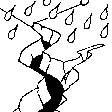
การกัดกร่อนของดินโดยน้ำ
- Wt (Loss of topsoil): การสูญเสียดินชั้นบนหรือการกัดกร่อนที่ผิวดิน
- Wg (Gully erosion): การกัดกร่อนแบบร่องธารหรือการทำให้เกิดร่องน้ำเซาะ
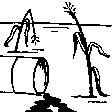
การเสื่อมโทรมของดินทางด้านเคมี
- Cn (Fertility decline): ความอุดมสมบูรณ์และปริมาณอินทรียวัตถุในดินถูกทำให้ลดลงไป (ไม่ได้เกิดจากสาเหตุการกัดกร่อน)
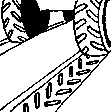
การเสื่อมโทรมของดินทางด้านกายภาพ
- Pc (Compaction): การอัดแน่น
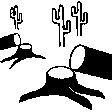
การเสื่อมโทรมของดินทางด้านชีวภาพ
- Bc (Reduction of vegetation cover): การลดลงของจำนวนพืชที่ปกคลุมดิน
- Bq (Quantity/biomass decline): การลดลงของปริมาณหรือมวลชีวภาพ
- Bl (Loss of soil life): การสูญเสียสิ่งมีชีวิตในดิน
- Bp (Increase of pests/diseases): การเพิ่มขึ้นของศัตรูพืชและโรคพืช
3.8 การป้องกัน การลดลง หรือการฟื้นฟูความเสื่อมโทรมของที่ดิน
ระบุเป้าหมายของเทคโนโลยีกับความเสื่อมโทรมของที่ดิน:
- ป้องกันความเสื่อมโทรมของที่ดิน
- ลดความเสื่อมโทรมของดิน
4. ข้อมูลจำเพาะด้านเทคนิค กิจกรรมการนำไปปฏิบัติใช้ ปัจจัยนำเข้า และค่าใช้จ่าย
4.1 แบบแปลนทางเทคนิคของเทคโนโลยี
ข้อมูลจำเพาะด้านเทคนิค (แบบแปลนทางเทคนิคของเทคโนโลยี):
Technical specifications for sowing non-winter-hardy honey-producing mixture
Sowing time: Sowing is recommended immediately after the harvest of winter cereals, in late July or early August.
Seeding rate: 12 kg/ha
Soil preparation: High-quality seedbed preparation is necessary due to the small seed size. Blind sowing is recommended to destroy or prevent the growth of weeds.
Sowing depth: Seeds are sown shallowly, typically at a depth of 1–2 cm, depending on soil conditions.
Row spacing: Cover crops are typically sown using a grain drill with a row spacing of 12.5 cm (approximately 5 inches) or broadcasted using a fertilizer spreader. Drilling ensures precise seed placement and consistent depth, promoting uniform germination. Broadcasting, on the other hand, involves spreading seeds evenly across the soil surface, often followed by light incorporation to enhance seed-to-soil contact. Both methods are widely used, with the choice depending on specific field conditions and equipment. Plant height: Plants in the mixture grow to a height of 50–100 cm, depending on the varieties used and growing conditions.
Winter hardiness: The plants in the mixture are non-winter-hardy; they perish with the first autumn frost, simplifying autumn or spring plowing.
Suitability for crop rotation: The mixture integrates well into crop rotation as species in it are not related to cash crops. It is sown after the harvest of winter cereals and other early/spring cash crops.
This mixture is particularly suitable for water protection areas as its intense growth prevents the leaching of excess nitrogen from the soil into groundwater, improves the water-holding capacity of the soil and effectively suppresses erosion and weeds. Additionally, its colorful flowers during the summer months enliven the landscape and provide a rich source of nectar for bees and other pollinators.
ผู้เขียน:
Gregor Kramberger
วันที่:
21/07/2025
4.2 ข้อมูลทั่วไปเกี่ยวกับการคำนวณปัจจัยนำเข้าและค่าใช้จ่าย
ให้ระบุว่าค่าใช้จ่ายและปัจจัยนำเข้าได้รับการคำนวณอย่างไร:
- ต่อพื้นที่ที่ใช้เทคโนโลยี
ระบุขนาดและหน่วยพื้นที่:
11.44 ha
If using a local area unit, indicate conversion factor to one hectare (e.g. 1 ha = 2.47 acres): 1 ha =:
ha = 10.000 m2
อื่นๆ หรือสกุลเงินประจำชาติ (ระบุ):
EUR
If relevant, indicate exchange rate from USD to local currency (e.g. 1 USD = 79.9 Brazilian Real): 1 USD =:
0.85
ระบุค่าเฉลี่ยของค่าจ้างในการจ้างแรงงานต่อวัน:
114
4.3 กิจกรรมเพื่อการจัดตั้ง
| กิจกรรม | Timing (season) | |
|---|---|---|
| 1. | Purchase of a disc harrow with cover crops seed drill | 1st year |
แสดงความคิดเห็น:
The use of a disc harrow with a cover crop seed drill can support soil preparation and sowing, but it is not strictly necessary. Many farmers use other types of harrows and seeders, which may be more cost-effective or already available on the farm. In some cases, such equipment is shared or acquired through collective investment. While the typical depreciation period for this type of machinery is around 12 years, it is often used for 20 to 30 years, or as long as it remains functional and economically viable.
4.4 ค่าใช้จ่ายของปัจจัยนำเข้าที่จำเป็นสำหรับการจัดตั้ง
| ปัจจัยนำเข้า | หน่วย | ปริมาณ | ค่าใช้จ่ายต่อหน่วย | ค่าใช้จ่ายทั้งหมดต่อปัจจัยนำเข้า | %ของค่าใช้จ่ายที่ก่อให้เกิดขึ้นโดยผู้ใช้ที่ดิน | |
|---|---|---|---|---|---|---|
| อุปกรณ์ | Disc harrow with cover crops seed drill | piece | 1.0 | 20000.0 | 20000.0 | 70.0 |
| ค่าใช้จ่ายทั้งหมดของการจัดตั้งเทคโนโลยี | 20000.0 | |||||
| Total costs for establishment of the Technology in USD | 23529.41 | |||||
ถ้าผู้ใช้ที่ดินรับภาระน้อยกว่า 100% ของค่าใช้จ่าย ให้ระบุว่าใครเป็นผู้รับผิดชอบส่วนที่เหลือ:
Part of the agricultural machinery intended for the implementation of environmental measures can be funded through non-repayable grants from European and national funds under the CAP.
แสดงความคิดเห็น:
The cost of such machinery is a key factor, as equipment like a disc harrow with a seed drill can be expensive. However, it should last for 20 years (or more). Furthermore, it is not strictly necessary, many farmers use simpler or existing machinery, and shared or collective investment is also common.
4.5 การบำรุงรักษาสภาพหรือกิจกรรมที่เกิดขึ้นเป็นประจำ
| กิจกรรม | ช่วงระยะเวลา/ความถี่ | |
|---|---|---|
| 1. | Variable costs of honey-producing non-winter-hardy cover crops | Every year. |
แสดงความคิดเห็น:
Variable costs represent the total production expenses for sowing the mixture, including seeds, machinery and labor costs and financing.
4.6 ค่าใช้จ่ายของปัจจัยนำเข้าและกิจกรรมที่เกิดขึ้นเป็นประจำที่ต้องการการบำรุงรักษา (ต่อปี)
| ปัจจัยนำเข้า | หน่วย | ปริมาณ | ค่าใช้จ่ายต่อหน่วย | ค่าใช้จ่ายทั้งหมดต่อปัจจัยนำเข้า | %ของค่าใช้จ่ายที่ก่อให้เกิดขึ้นโดยผู้ใช้ที่ดิน | |
|---|---|---|---|---|---|---|
| แรงงาน | Work with machines | hour | 52.0 | 9.0 | 468.0 | 100.0 |
| อุปกรณ์ | Seedbed preparation and sowing | hour | 23.0 | 35.2 | 809.6 | 100.0 |
| อุปกรณ์ | Mulching | hour | 29.0 | 32.0 | 928.0 | 100.0 |
| วัสดุด้านพืช | Seed | ha | 11.44 | 79.2 | 906.05 | 100.0 |
| อื่น ๆ | Financing cost | % | 0.03 | 3089.94 | 92.7 | 100.0 |
| ค่าใช้จ่ายทั้งหมดของการบำรุงรักษาสภาพเทคโนโลยี | 3204.35 | |||||
| Total costs for maintenance of the Technology in USD | 3769.82 | |||||
แสดงความคิดเห็น:
The farmer cultivates a total of 28.6 hectares of arable land. The area is theoretically divided into five equal parts, as it follows a 5-year crop rotation system. Additionally, a cover crop is sown after barley and wheat. Therefore, we have accounted for costs on 2/5 of the additional total area.
4.7 ปัจจัยสำคัญที่สุดที่มีผลกระทบต่อค่าใช้จ่าย
ปัจจัยสำคัญที่สุดที่มีผลกระทบต่อค่าใช้จ่ายต่างๆ:
The total area is theoretically divided into five equal parts, following the 5-year crop rotation system. However, in practice, this division is not perfectly even. Other important cost factors include variations in input prices (such as seeds, fertilizers, and plant protection products), machinery costs, labor availability, and weather conditions that impact yields and operational efficiency.
5. สิ่งแวดล้อมทางธรรมชาติและของมนุษย์
5.1 ภูมิอากาศ
ฝนประจำปี
- < 250 ม.ม.
- 251-500 ม.ม.
- 501-750 ม.ม.
- 751-1,000 ม.ม.
- 1,001-1,500 ม.ม.
- 1,501-2,000 ม.ม.
- 2,001-3,000 ม.ม.
- 3,001-4,000 ม.ม.
- > 4,000 ม.ม.
ระบุปริมาณน้ำฝนเฉลี่ยรายปี (ถ้ารู้) :หน่วย ม.ม.
1032.00
ข้อมูลจำเพาะ/ความคิดเห็นเรื่องปริมาณน้ำฝน:
Most precipitation falls in summer, the months with the highest average precipitation are August and September, the least precipitation falls in winter, in January and February at least, and in principle more precipitation falls in autumn than in spring.
ระบุชื่อของสถานีตรวดวัดอากาศที่ใช้อ้างอิงคือ:
Jareninski Vrh (1991-2020)
เขตภูมิอากาศเกษตร
- กึ่งชุ่มชื้น
The average annual air temperature at Jareninski Vrh during the reference period 1991–2020 was 10.1 °C.
5.2 สภาพภูมิประเทศ
ค่าเฉลี่ยความลาดชัน:
- ราบเรียบ (0-2%)
- ลาดที่ไม่ชัน (3-5%)
- ปานกลาง (6-10%)
- เป็นลูกคลื่น (11-15%)
- เป็นเนิน (16-30%)
- ชัน (31-60%)
- ชันมาก (>60%)
ธรณีสัณฐาน:
- ที่ราบสูง/ที่ราบ
- สันเขา
- ไหล่เขา
- ไหล่เนินเขา
- ตีนเนิน
- หุบเขา
ระดับความสูง:
- 0-100 เมตร
- 101-500 เมตร
- 501-1,000 เมตร
- 1,001-1,500 เมตร
- 1,501-2,000 เมตร
- 2,001-2,500 เมตร
- 2,501-3,000 เมตร
- 3,001-4,000 เมตร
- > 4,000 เมตร
ให้ระบุถ้าเทคโนโลยีได้ถูกนำไปใช้:
- ไม่เกี่ยวข้อง
5.3 ดิน
ค่าเฉลี่ยความลึกของดิน:
- ตื้นมาก (0-20 ซ.ม.)
- ตื้น (21-50 ซ.ม.)
- ลึกปานกลาง (51-80 ซ.ม.)
- ลึก (81-120 ซ.ม.)
- ลึกมาก (>120 ซ.ม.)
เนื้อดิน (ดินชั้นบน):
- ปานกลาง (ดินร่วน ทรายแป้ง)
เนื้อดินล่าง (> 20 ซ.ม.ต่ำจากผิวดิน):
- ปานกลาง (ดินร่วน ทรายแป้ง)
อินทรียวัตถุในดิน:
- ปานกลาง (1-3%)
5.4 ความเป็นประโยชน์และคุณภาพของน้ำ
ระดับน้ำใต้ดิน:
5-50 เมตร
น้ำไหลบ่าที่ผิวดิน:
ดี
คุณภาพน้ำ (ที่ยังไม่ได้บำบัด):
เป็นน้ำใช้เพื่อการเกษตรเท่านั้น (การชลประทาน)
Water quality refers to:
surface water
ความเค็มของน้ำเป็นปัญหาหรือไม่:
ไม่ใช่
กำลังเกิดน้ำท่วมในพื้นที่หรือไม่:
ใช่
บ่อยครั้ง:
เป็นครั้งเป็นคราว
ความคิดเห็นและข้อมูลจำเพาะเพิ่มเติมเรื่องคุณภาพและปริมาณน้ำ:
Hydromelioration was carried out in the area, a drainage system and water retention systems (e.g. ponds and basins) were arranged.
5.5 ความหลากหลายทางชีวภาพ
ความหลากหลายทางชนิดพันธุ์:
- ปานกลาง
ความหลากหลายของแหล่งที่อยู่:
- ปานกลาง
5.6 ลักษณะของผู้ใช้ที่ดินที่นำเทคโนโลยีไปปฏิบัติใช้
อยู่กับที่หรือเร่ร่อน:
- อยู่กับที่
แนวทางการตลาดของระบบการผลิต:
- ทำการค้า/การตลาด
รายได้ที่มาจากนอกฟาร์ม:
- 10-50% ของรายได้ทั้งหมด
ระดับของความมั่งคั่งโดยเปรียบเทียบ:
- พอมีพอกิน
เป็นรายบุคคล/ครัวเรือน:
- เป็นรายบุคคล/ครัวเรือน
ระดับของการใช้เครื่องจักรกล:
- การใช้เครื่องจักรหรือเครื่องยนต์
เพศ:
- ชาย
อายุของผู้ใช้ที่ดิน:
- วัยกลางคน
5.7 Average area of land used by land users applying the Technology
- < 0.5 เฮกตาร์
- 0.5-1 เฮกตาร์
- 1-2 เฮกตาร์
- 2-5 เฮกตาร์
- 5-15 เฮกตาร์
- 15-50 เฮกตาร์
- 50-100 เฮกตาร์
- 100-500 เฮกตาร์
- 500-1,000 เฮกตาร์
- 1,000-10,000 เฮกตาร์
- >10,000 เฮกตาร์
พิจารณาว่าเป็นขนาดเล็ก กลาง หรือขนาดใหญ่ (ซึ่งอ้างอิงถึงบริบทระดับท้องถิ่น):
- ขนาดกลาง
แสดงความคิดเห็น:
In 2023, the average agricultural holding in Slovenia manages 8.8 hectares of utilized agricultural land.
5.8 กรรมสิทธิ์ในที่ดิน สิทธิในการใช้ที่ดินและสิทธิในการใช้น้ำ
กรรมสิทธิ์ในที่ดิน:
- รายบุคคล ได้รับสิทธิครอบครอง
สิทธิในการใช้ที่ดิน:
- เช่า
- รายบุคคล
สิทธิในการใช้น้ำ:
- เกี่ยวกับชุมชน (ถูกจัดระเบียบ)
Are land use rights based on a traditional legal system?
ไม่ใช่
ระบุ:
Based on national legal system.
5.9 การเข้าถึงบริการและโครงสร้างพื้นฐาน
สุขภาพ:
- จน
- ปานกลาง
- ดี
การศึกษา:
- จน
- ปานกลาง
- ดี
ความช่วยเหลือทางด้านเทคนิค:
- จน
- ปานกลาง
- ดี
การจ้างงาน (เช่น ภายนอกฟาร์ม):
- จน
- ปานกลาง
- ดี
ตลาด:
- จน
- ปานกลาง
- ดี
พลังงาน:
- จน
- ปานกลาง
- ดี
ถนนและการขนส่ง:
- จน
- ปานกลาง
- ดี
น้ำดื่มและการสุขาภิบาล:
- จน
- ปานกลาง
- ดี
บริการด้านการเงิน:
- จน
- ปานกลาง
- ดี
6. ผลกระทบและสรุปคำบอกกล่าว
6.1 ผลกระทบในพื้นที่ดำเนินการ (On-site) จากการใช้เทคโนโลยี
ผลกระทบทางด้านเศรษฐกิจและสังคม
การผลิต
การผลิตพืชผล
แสดงความคิดเห็น/ระบุ:
Cover crops improve soil fertility, moisture retention, and nutrient availability, leading to slight yield improvements in the following crop. The impact depends on crop rotation, soil conditions, and cover crop management.
การผลิตพืชที่ใช้เลี้ยงปศุสัตว์
แสดงความคิดเห็น/ระบุ:
Cover crops used in this system are not intended for grazing or fodder production; their role is primarily soil conservation and fertility enhancement. Usually, they are incorporated into the soil.
การจัดการที่ดิน
แสดงความคิดเห็น/ระบุ:
Cover crops enhance soil conservation, reduce the need for intensive tillage, and improve crop rotation efficiency.
รายได้และค่าใช้จ่าย
ค่าใช่จ่ายของปัจจัยการผลิตทางการเกษตร
แสดงความคิดเห็น/ระบุ:
Cover crops reduce the need for fertilizers and herbicides, but additional costs for seeds and labor partially offset these savings.
รายได้จากฟาร์ม
แสดงความคิดเห็น/ระบุ:
Cover crops require an initial investment, but long-term benefits such as reduced input costs and improved soil fertility may positively impact farm income over time.
ภาระงาน
แสดงความคิดเห็น/ระบุ:
Additional labor required for sowing and managing cover crops.
ผลกระทบด้านนิเวศวิทยา
วัฐจักรน้ำหรือน้ำบ่า
การระเหย
แสดงความคิดเห็น/ระบุ:
Cover crops reduce direct soil exposure, lowering evaporation and improving water retention.
ดิน
ความชื้นในดิน
แสดงความคิดเห็น/ระบุ:
Cover crops enhance soil moisture by reducing evaporation and improving water infiltration.
สิ่งปกคลุมดิน
แสดงความคิดเห็น/ระบุ:
Cover crops provide continuous ground cover, protecting the soil from erosion, nutrient loss, and extreme weather conditions.
การสูญเสียดิน
แสดงความคิดเห็น/ระบุ:
Cover crops significantly reduce soil loss by stabilizing the soil, preventing erosion, and improving infiltration.
ความหลากหลายทางชีวภาพของพืชและสัตว์
การปกคลุมด้วยพืช
แสดงความคิดเห็น/ระบุ:
Cover crops provide continuous plant cover, reducing bare soil exposure and enhancing biodiversity.
มวลชีวภาพ/เหนือดินชั้น C
แสดงความคิดเห็น/ระบุ:
Cover crops contribute significantly to above-ground biomass accumulation, increasing organic carbon input into the soil.
ความหลากหลายทางชีวภาพของพืช
แสดงความคิดเห็น/ระบุ:
Cover crops introduce multiple species into the cropping system, enhancing plant diversity and ecosystem resilience.
ชนิดพันธุ์ที่ให้ประโยชน์
แสดงความคิดเห็น/ระบุ:
Cover crops support pollinators, natural pest predators, and soil organisms, enhancing ecosystem balance.
ความหลากหลายของสัตว์
แสดงความคิดเห็น/ระบุ:
Cover crops create diverse habitats for pollinators, beneficial insects, and soil organisms, improving ecosystem resilience.
การจัดการศัตรูพืชและโรคพืช
แสดงความคิดเห็น/ระบุ:
Cover crops help break pest and disease cycles, support beneficial insects, and improve soil health, reducing outbreaks.
ลดความเสี่ยงของภัยพิบัติ
ผลกระทบจากภัยแล้ง
แสดงความคิดเห็น/ระบุ:
Cover crops enhance water retention, reduce evaporation, and improve soil structure, making fields more resilient to drought.
Specify assessment of on-site impacts (measurements):
The data have not been obtained through specific measurements but rather through a questionnaire with the farmer and insights from other farms and agricultural advisors.
6.2 ผลกระทบนอกพื้นที่ดำเนินการ (Off-site) จากการใช้เทคโนโลยี
ความสามารถต้านทานการเปลี่ยนแปลง / ความสามารถในการคัดกรอง
แสดงความคิดเห็น/ระบุ:
Cover crops act as a natural buffer, reducing runoff, filtering pollutants, and preventing nutrient loss.
Specify assessment of off-site impacts (measurements):
The data have not been obtained through specific measurements but rather through a questionnaire with the farmer and insights from other farms and agricultural advisors.
6.3 การเผชิญและความตอบสนองของเทคโนโลยีต่อการเปลี่ยนแปลงสภาพภูมิอากาศที่ค่อยเป็นค่อยไป และสภาพรุนแรงของภูมิอากาศ / ภัยพิบัติ (ที่รับรู้ได้โดยผู้ใช้ที่ดิน)
การเปลี่ยนแปลงสภาพภูมิอากาศที่ค่อยเป็นค่อยไป
การเปลี่ยนแปลงสภาพภูมิอากาศที่ค่อยเป็นค่อยไป
| ฤดู | increase or decrease | เทคโนโลยีมีวิธีการรับมืออย่างไร | |
|---|---|---|---|
| อุณหภูมิประจำปี | เพิ่มขึ้น | ดี | |
| อุณหภูมิตามฤดูกาล | ฤดูร้อน | เพิ่มขึ้น | ดี |
| อุณหภูมิตามฤดูกาล | ฤดูใบไม้ผลิ | เพิ่มขึ้น | ปานกลาง |
| อุณหภูมิตามฤดูกาล | ฤดูใบไม้ร่วง | เพิ่มขึ้น | ดี |
| อุณหภูมิตามฤดูกาล | ฤดูหนาว | เพิ่มขึ้น | ปานกลาง |
| ฝนตามฤดู | ฤดูร้อน | เพิ่มขึ้น | ดี |
| ฝนตามฤดู | ฤดูใบไม้ผลิ | เพิ่มขึ้น | ปานกลาง |
| ฝนตามฤดู | ฤดูใบไม้ร่วง | ลดลง | ดี |
สภาพรุนแรงของภูมิอากาศ (ภัยพิบัติ)
ภัยพิบัติทางอุตุนิยมวิทยา
| เทคโนโลยีมีวิธีการรับมืออย่างไร | |
|---|---|
| พายุฝนประจำท้องถิ่น | ดี |
ภัยพิบัติจากสภาพภูมิอากาศ
| เทคโนโลยีมีวิธีการรับมืออย่างไร | |
|---|---|
| คลื่นความร้อน | ดี |
| ภัยจากฝนแล้ง | ดี |
6.4 การวิเคราะห์ค่าใช้จ่ายและผลประโยชน์ที่ได้รับ
ผลประโยชน์ที่ได้รับเปรียบเทียบกับค่าใช้จ่ายในการจัดตั้งเป็นอย่างไร (จากมุมมองของผู้ใช้ที่ดิน)
ผลตอบแทนระยะสั้น:
ด้านลบเล็กน้อย
ผลตอบแทนระยะยาว:
ด้านบวกเล็กน้อย
ผลประโยชน์ที่ได้รับเปรียบเทียบกับค่าใช้จ่ายในการบำรุงรักษาหรือต้นทุนที่เกิดขึ้นซ้ำอีก เป็นอย่างไร (จากมุมมองของผู้ใช้ที่ดิน)
ผลตอบแทนระยะสั้น:
เป็นกลางหรือสมดุล
ผลตอบแทนระยะยาว:
ด้านบวก
แสดงความคิดเห็น:
In the short term, establishment costs are high machinery investment, with no direct financial return. However, in the long term, benefits such as improved soil fertility, reduced input costs, and better yields in crop rotation help offset initial expenses. In the short term, maintenance costs, such as seed, labor for sowing and termination, are balanced by reduced expenses on herbicides and fertilizers. Over the long term, cover cropping leads to lower input costs, improved soil health, and better yields in crop rotation
6.5 การปรับตัวของเทคโนโลยี
- 11-50%
Of all those who have adopted the Technology, how many did so spontaneously, i.e. without receiving any material incentives/ payments?
- 0-10%
6.6 การปรับตัว
เทคโนโลยีได้รับการปรับเปลี่ยนเมื่อเร็วๆนี้ เพื่อให้ปรับตัวเข้ากับสภาพที่กำลังเปลี่ยนแปลงหรือไม่:
ใช่
ถ้าตอบว่าใช่ ให้ระบุว่าเงื่อนไขการเปลี่ยนแปลงใดที่ถูกปรับตัว:
- การเปลี่ยนแปลงของตลาด
ให้ระบุการปรับตัวของเทคโนโลยี (การออกแบบ วัสดุหรือชนิดพันธุ์ เป็นต้น):
The composition of the cover crop mix was adjusted to better fit the crop rotation, improving soil fertility and weed suppression.
6.7 จุดแข็ง / ข้อได้เปรียบ / โอกาสของเทคโนโลยี
| จุดแข็ง / ข้อได้เปรียบ / โอกาสในทัศนคติของผู้ใช้ที่ดิน |
|---|
| Improvement of soil fertility (improved soil structure, increased humus - organic matter content) |
| Soil erosion control (e.g., Pernica lake) |
| Weed control – suppression of weeds |
| Moisture retention in the soil (protection of soil against direct sun rays) |
| Long-term pest control |
| Easier soil cultivation - suitable for minimum tillage |
| Beneficial for bees and wild pollinators |
| Improved aesthetic value of the landscape |
| จุดแข็ง / ข้อได้เปรียบ / โอกาสในทัศนคติของผู้รวบรวมหรือวิทยากรหลัก |
|---|
| Non-winter-hardy cover crops improve soil structure, increase organic matter content, increase the number and variety of soil (micro)organisms and enhance nutrient cycling, leading to more fertile and resilient soils. They also help in nutrient retention. |
| The root systems of cover crops help anchor the soil, reducing erosion caused by wind and water. |
| Continuous cover with cover crops can suppress weeds, reducing the need for herbicides. |
| Certain cover crops can break pest and disease cycles, contributing to healthier crops. |
| Honey producing non-winter-hardy cover crops support pollinators. |
6.8 จุดอ่อน / ข้อเสียเปรียบ / ความเสี่ยงของเทคโนโลยีและวิธีการแก้ไข
| จุดอ่อน / ข้อเสียเปรียบ / ความเสี่ยงในทัศนคติของผู้ใช้ที่ดิน | มีวิธีการแก้ไขได้อย่างไร |
|---|---|
| Time- and labor-intensive, requiring significant coordination in terms of timing, weather, and other conditions to meet the deadlines set within the framework of the Common Agricultural Policy – CAP, if the farmer wants to get subsidies for this planting cover crops. | Farmers have greater influence in policy making. Bottom-up approach. |
| Additional seed cost. | The farmer enrolls in CAP measures to receive a subsidy for this measure. |
| Initial costs when purchasing equipment, additional investments, and changes in work technology. | Equipment rental, applying for funding grants for equipment, and modifying already existing machinery. |
| Complexity of management, more demanding planning, and necessary knowledge. | Education |
| Farm conditions vary, and the effectiveness of cover crops depends on soil type, climate, and local conditions, which can affect growth and overall benefits. | Selecting suitable cover crop mixtures adapted to local soil and climate conditions. Flexible management practices, regular monitoring, technical support, education. |
| Inappropriate use | Education |
| จุดอ่อน / ข้อเสียเปรียบ / ความเสี่ยงในทัศนคติของผู้รวบรวมหรือวิทยากรหลัก | มีวิธีการแก้ไขได้อย่างไร |
|---|---|
| Establishing and terminating cover crops require additional time and labor, which can be a limiting factor for some farmers. | Good planning, collaboration with other farmers, subsidies, and awareness of the long-term benefits of this method encourages the farmer to be more willing to invest effort. |
| Additional costs for seed purchase and extra labor. | The farmer enrolls in CAP measures to receive a subsidy for this measure. |
| Potential challenges in soil preparation. | Appropriate equipment, planning, selection of the right plant varieties. |
| Complexity of crop management and planning. | Education, planning, record keeping. |
7. การอ้างอิงและการเชื่อมต่อ
7.1 วิธีการและแหล่งข้อมูล
- การสัมภาษณ์กับผู้ใช้ที่ดิน
1 (Andrej Ropič, farmer)
- การสัมภาษณ์ผู้เชี่ยวชาญด้าน SLM หรือผู้ชำนาญ
2 (Chamber of Agriculture and Forestry of Slovenia (KGZS) – Institute of Agriculture and Forestry Maribor; Tamara Korošec and Timotej Horvat)
- การเก็บรวบรวมมาจากรายงานและเอกสารที่มีอยู่
CAP and Slovenian Strategic Plan 2023-2027.
วันที่เก็บรวบรวมข้อมูล(ภาคสนาม) :
17/01/2023
แสดงความคิดเห็น:
Visit to the farm and farmer interview.
7.2 การอ้างอิงถึงสิ่งตีพิมพ์
หัวข้อ, ผู้เขียน, ปี, หมายเลข ISBN:
Quintarelli, V., Radicetti, E., Allevato, E., Stazi, S. R., Haider, G., Abideen, Z., Bibi, S., Jamal, A., & Mancinelli, R. (2022). Cover Crops for Sustainable Cropping Systems: A Review. Agriculture, 12(12), 2076.
ชื่อเรื่อง ผู้เขียน ปี ISBN:
https://doi.org/10.3390/agriculture12122076
7.3 Links to relevant online information
ชื่อเรื่องหรือคำอธิบาย:
Ministry of Agriculture, Forestry and Food. (2024). Unified Application 2024: Guidelines for the implementation of interventions under the Strategic Plan of the Common Agricultural Policy 2023–2027. Ljubljana, Slovenia.
URL:
https://www.kgzs.si/uploads/eiv24/NAVODILA%201/00_VELIKA_NAVODILA_2024_-_CELOTA_-_28_5_24.pdf
ชื่อเรื่องหรือคำอธิบาย:
SARE: Cover Crops for Sustainable Crop Rotations
URL:
https://www.sare.org/resources/cover-crops/
ชื่อเรื่องหรือคำอธิบาย:
Recommendations for sowing catch crops and winter cover crops for the sustainable use of arable land (Priporočila za setev naknadnih in prezimnih posevkov, za trajnostno rabo njiv)
URL:
https://www.kmetijskizavod-nm.si/uploads/kgz_nm/travni%C5%A1tvo/Priporo%C4%8Dila_za_setev_naknadnih_in_prezimnih_posevkov.pdf
ลิงก์และโมดูล
ขยายทั้งหมด ย่อทั้งหมดลิงก์
ไม่มีลิงก์
โมดูล
ไม่มีโมดูล


